OxyContin is a prescription painkiller that contains oxycodone, a powerful semisynthetic analgesic opioid. A timed-release pill that is manufactured in 10, 20, 40, and 80-milligram versions, OxyContin is primarily used to treat moderate to severe pain (both chronic and acute) and can provide up to 12 hours of relief with a single dose.
Understanding OxyContin
Learn about OxyContin and substance abuse
OxyContin has been approved for use in the United States since 1995. It is classified by the U.S. Drug Enforcement Agency (DEA) as a Schedule II controlled substance, which means that the DEA has determined that it has a high potential for abuse and lead to severe psychological and physical dependence.
When taken as directed by a qualified prescribing physician, OxyContin can be an extremely beneficial medication. In addition to alleviating pain, OxyContin also reduces anxiety and provides users with a sense of serenity and euphoria. Unfortunately, these effects also make the drug an enticing target for individuals who are in search of a recreational high. As is the case with the misuse of other opioids, oxycodone abuse can quickly lead to tolerance and dependence.
Because OxyContin is so widely prescribed, it is relatively easy for people to acquire it for illicit uses, either to self-medicate or for recreational purposes. Regardless of how a person begins to abuse this medication, dependence can be difficult to overcome without professional assistance, in part because of the powerful withdrawal symptoms that can occur within 24 hours of attempted cessation.
Substance abuse treatment has proved to be an effective means of dealing with this particularly insidious form of chemical dependency. With proper help, those addicted to this substance can overcome their dependence upon OxyContin and resume living a drug-free life.
Statistics
OxyContin addiction statistics
Within five years of OxyContin’s introduction to the U.S. market, it was nation’s best-selling brand name prescription painkiller. By 2010, more than 250 million prescriptions for opioid-based painkillers were being written every year and annual sales of OxyContin exceeded $3 billion.
Data collected by the DEA indicates that about five million Americans use OxyContin and other prescription opioids for nonmedical purposes each year. Research conducted by the U.S. National Institute on Drug Abuse (NIDA) reveals that more than two million people are currently suffering from a substance use disorder related to OxyContin or other opioid-based prescription medications.
In the first decade of the 21st century, deaths attributed to prescription painkiller overdose increased by 400 percent among American women and by 265 percent among American men. Prescription painkiller overdose is responsible for the deaths of about 10,000 men and 6,500 women every year in the United States and nearly 500,000 adults end up in emergency rooms because of problems related to the misuse of prescription painkillers.
Causes and Risk Factors
Causes and risk factors for OxyContin addiction
The abuse of and addiction to OxyContin can result from a combination of genetic and environmental risk factors, including the following:
Genetic: Having a family history of drug abuse, addiction, and/or mental illness increases the likelihood that a person will have a problem with chemical dependency. If a person’s parents or siblings have struggled with a drug problem, he or she is at a significantly higher risk for experiencing similar issues. For OxyContin abuse, chronic pain is a specific genetic factor that can raise the risk of eventually abusing or becoming addicted to this powerful medication.
Environmental: Growing up in a family where OxyContin abuse was common may predispose a person to engaging in similar behavior. Trauma is also a strong environmental influence on the development of a substance use disorder. Individuals who have been abused, neglected, assaulted, or otherwise traumatized may be prescribed OxyContin for physical pain related to the trauma or may turn to substance abuse in a misguided attempt to self-medicate the lingering psychological pain. Living in a community where drugs are easily accessible, working in a particularly stressful field, and associating with individuals who engage in recreational substance abuse are also environmental factors that can put a person at an increased risk for substance abuse and addiction.
Risk Factors:
- Family members who have struggled with substance abuse, addiction, and/or mental illness
- Personal history of prior substance abuse and/or mental illness
- Personal history of abuse, neglect, assault, or other trauma
- Suffering from chronic or acute pain
- Gender (OxyContin abuse is more prevalent among men than among women)
- Easy access to prescription medications
- Poverty
- Peer pressure
Signs and Symptoms
Signs and symptoms of OxyContin addiction
OxyContin abuse may reveal itself via a variety of signs and symptoms that depend upon several factors, including the duration and severity of an individual’s abuse of this opioid medication and his or her personal prior or current substance using behaviors. The following symptoms may indicate that a person has been abusing OxyContin:
Behavioral symptoms:
- Lying or being secretive regarding whereabouts, associates, and/or activities
- Unexplained decline in performance at work
- Unexplained absences from work
- Visiting several doctors in attempt to get multiple prescriptions
- Borrowing or stealing OxyContin that was prescribed to someone else
- Withdrawing from friends and family members
- Borrowing or stealing money
Physical symptoms:
- Poor grooming and personal hygiene
- Dizziness
- Difficulties with balance and coordination
- Delayed reflexes
- Slowed breathing and heart rate
- Feeling “phantom pains” that require OxyContin to alleviate
- Nausea
- Vomiting
- Diarrhea
- Dilated pupils
- Excessive yawning
- Itchiness
Cognitive symptoms:
- Inability to concentrate or focus
- Paranoia
- Confusion
- Impaired problem-solving skills
- Inability to plan or follow through on plans
- Difficulty remembering
Psychosocial symptoms:
- Obsession with acquiring and using OxyContin
- Loss of interest in people, events, and activities that were once important
- Anxiety and panic
- Depression
- Anger and irritability
Co-Occurring Disorders
OxyContin addiction and co-occurring disorders
The abuse of and addiction to OxyContin is often accompanied by one or more mental health disorders, including the following:
- Anxiety disorders
- Bipolar disorder
- Major depressive disorder
- Persistent depressive disorder
- Oppositional defiant disorder (ODD)
- Posttraumatic stress disorder (PTSD)
Effects
Effects of OxyContin addiction
Sustained abuse of OxyContin, oxycodone, or similar drugs can result in some, many, or all of the following:
- Job loss
- Guilt, shame, and self-loathing
- Suicidal ideation and attempts
- Relationship problems
- Legal problems
- Financial problems
- Insomnia, hypersomnia, and sleep apnea
- Suppressed immune system
- Sexual dysfunction
- Vision problems
- Cardiovascular damage
- Respiratory distress
- Constipation
Withdrawl & Overdose
Effects of OxyContin withdrawal and overdose
Effects of OxyContin withdrawal: Becoming dependent upon OxyContin means that when a person either attempts to stop using or is unable to access the drug, he or she will begin to experience a number of unpleasant withdrawal symptoms. These symptoms will begin to occur as early as 24 hours after OxyContin has begun exiting one’s system:
- Powerful drug cravings
- Watery eyes and runny nose
- Loss of appetite
- Nausea, diarrhea, and vomiting
- Muscle spasms, weakness, and pain
- Increased heartbeat
- Increased blood pressure
- Abdominal cramping
- Agitation and irritability
- Depression
- Insomnia
Effects of OxyContin overdose: Overdosing on OxyContin is a dangerous and potentially deadly experience. Anyone who exhibits the following symptoms after ingesting OxyContin should immediately be taken to an emergency room in order to prevent a fatal outcome:
- Pinpoint pupils
- Extremely shallow breathing
- Extremely slow heartbeat
- Extremely low blood pressure
- Loss of consciousness
- Clammy skin
- Bluish tint to lips and fingernails



